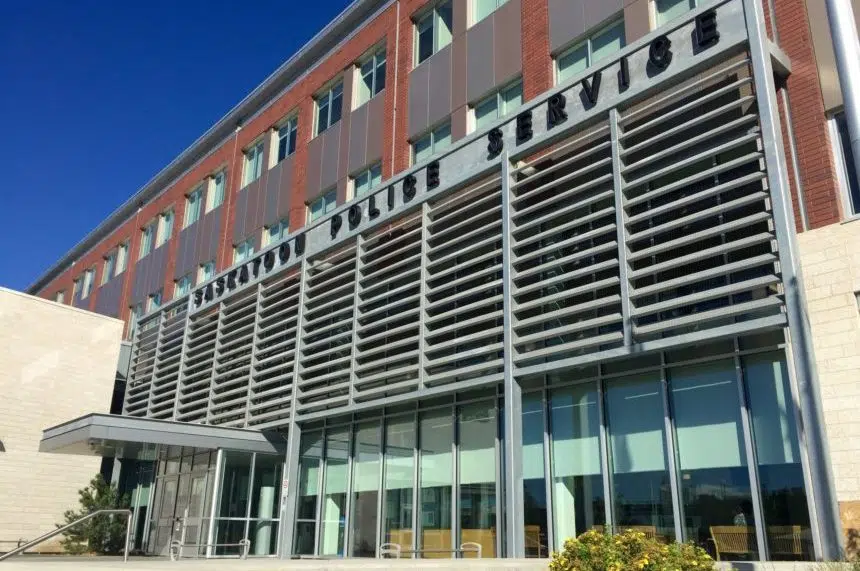As protests continue in Saskatchewan to raise awareness about racism following the death of George Floyd, the Federation of Sovereign Indigenous Nations (FSIN) is renewing its call for an independent provincial body to investigate serious police-related incidents.
FSIN Vice-Chief David Pratt says police shouldn’t be investigating police – and acknowledges there have been numerous high profile violent incidents in Saskatchewan over many decades that have involved either municipal or RCMP officers.
“I think we’re one of the last regions in Canada that still has police investigating police. Pretty much all the other regions have an independent body.”
Pratt is also calling for more Indigenous-led police or community initiatives, but recognizes that there are a host of underlying social and judicial issues that also need to be addressed.
“We’ve got to look at restorative justice. When we look at how the western-based system of justice is all punitive, it’s all about punishment. It’s about ‘oh, you did the crime, now you’re going to go bust these rocks up to 20 years or whatever…we have to look at restorative justice and realize that a lot of our people are dealing with personal issues.”
Pratt says those issues can range from addictions to trauma suffered at residential schools and many other issues.
Saskatoon Police Chief Troy Cooper says while there are already mechanisms in place to deal with serious police incidents, citing the Public Complaints Commission and FSIN Special Investigation Unit. For more serious incidents, he cites an independent observer appointed by the deputy minister of justice – however, those are typically other police organizations within the province, and sometimes even within the same police body.
However, if the provincial justice minister is considering developing that independent investigative body, he’s hoping for some input.
“The justice minister has mentioned that he’s reviewing the oversight model in Saskatchewan, and we’re looking forward to working with him, to make sure that what’s developed is trusted by the community and trusted by the officers.”
Pratt meanwhile, believes there also needs to be more advocacy in the courtroom, from lawyers to court support workers.
“Sometimes they’re telling our people to plead out just to get them off the dockets.”
Protests, Diversity and Use of Force by Police
The recent protests, one of which began in front of Saskatoon police headquarters have been the public’s way of highlighting racial inequality by police and within the justice system, says Cooper.
His staff members were shaken by the video of George Floyd’s death.
“We’re as disturbed by that incident and by what it represented as the rest of the world was…our service has been listening, has been witnessing what’s been going on and has been doing its best to try and understand what’s going on and what the best steps are going forward.”
And Cooper is adamant that the SPS of 2020 is not the same as that of the early 2000s or prior.
“We’ve been actively engaged with the community for a number of years. We’ve got outreach opportunities with community groups. Specifically we have standing committees – we’ve got an elders advisory committee, we have an Indigenous women’s advisory circle….we have a police advisory committee on diversity. We have sort of outreach community contact throughout the year.”
Still, he says there is room for improvement, citing the department’s 2019 Annual Equity, Diversity and Inclusion Report, along with the 2019 Annual Use of Force Report, both of which are available to the public online.
While the SPS has not met its targets, the diversity report indicates that in 2002 there were 30 Indigenous employees. That rose to 66 by 2019. In 2002 there were just seven members of a visible minority and now there are 28. In 2002, 80 women had jobs at the police service; in 2020 there are 204.
The SPS is currently made up of 585 employees, 471 of whom are police officers.
The executive, sergeant and staff sergeant officer positions include two Indigenous women, 15 Indigenous males, and five males who are a member of a visible minority.
“We’ve had changes in our human resources practice around commitments to recruitment and targets to make sure we reflect the community that we’re serving” explained Cooper.
The Use of Force Report indicates that neck restraints are allowed, and in fact were used twice by officers in the last year.
In the last year, there were 271 incidents involving use of force by Saskatoon Police, compared with 256 in 2018 and 264 in 2017.
The use of force in 2019 resulted in 119 suspect injuries. Ninety-one suspects needed medical attention and 32 were hospitalized. That’s up from 81 incidents in 2018 and 110 in 2017.
Officers were injured 26 times, with six who needed medical attention, and one officer who required hospitalization. In 2018 there were 24 officers injured, and in 2017, 30 officers were injured.
The use of force incidents, according to the report, makes up just under two per cent of the 86,144 calls officers attended to including 13,713 arrests.
Calls to Reduce Police Budget
The Saskatoon Police Service budget is just over $109 million for 2020, an increase of 4.37 per cent over 2019. In Regina, there have been calls for the municipal force to be ‘defunded,’ meaning more money directed away from funding officers, for use in community-based programs.
Cooper says there are about 173 officers for 100,000 people in Saskatoon as opposed to more than 200 officers per 100,000 in many U.S. cities.
While he understands the discussion, he also believes any reduction in the police budget isn’t practical. However, there are areas that could be examined going forward, to potentially engage additional community partners.
“We have a history of looking for partnerships to make sure that police are only used when they’re actually required. We have some provincial strategies where police are used as a component, but certainly outreach or addictions treatment and those other things as part of the overall strategy, rather than using police as a solution to all the different social issues we have.”











